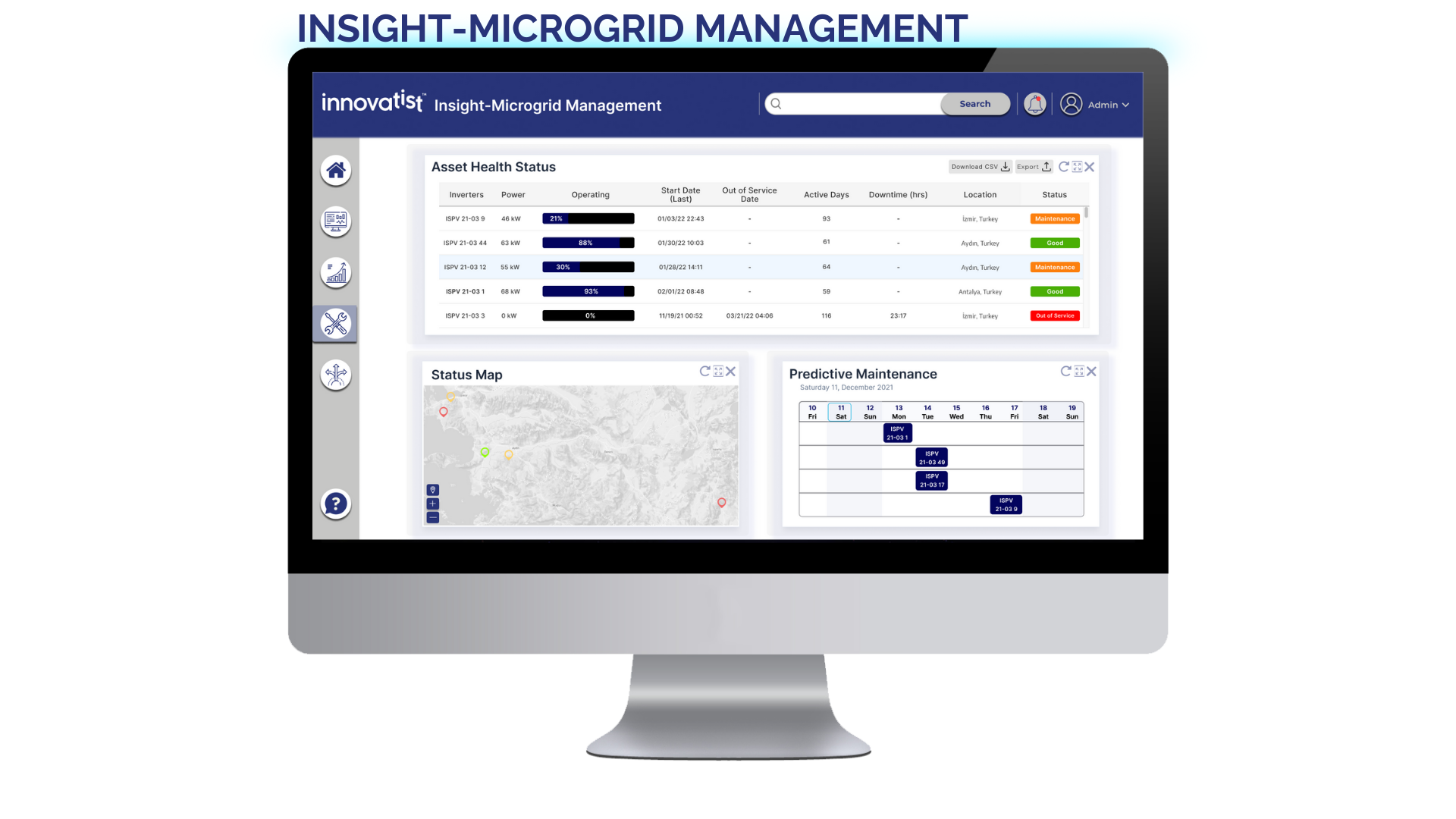
Microgrid monitoring is a critical aspect of managing and maintaining microgrid systems effectively.
Microgrids consists of different renewable technologies such as wind, solar, biomass, geothermal, storage technologies etc, are localized energy systems that can operate independently or in conjunction with the main power grid. Monitoring these systems involves the continuous collection of data related to their performance, status, and health.
Effective microgrid monitoring not only ensures reliable and efficient operation but also supports sustainability goals by optimizing the integration of renewable energy sources and reducing greenhouse gas emissions. It has a crucial role in maximizing the benefits of microgrid systems in terms of energy resilience, cost savings, and environmental impact.
Key Functions of Innovatist Microgrid Monitoring Platform
Data Communication: Data collected by sensors and assets must be transmitted to a central monitoring system for analysis. This typically involves wired or wireless communication protocols, such as TCP/IP, MQTT, OPC UA, Ethernet, Wi-Fi, depending on the location and scale of the microgrid.
Central & Real-time Monitoring System: A central monitoring system is responsible for collecting, storing, and analyzing the data from the assets and sensors. This system can be cloud-based or on-premises and may use specialized software for real-time monitoring and historical data analysis. Real-time monitoring provides instant insights into the microgrid's performance. Operators can detect issues such as power outages, equipment failures, or fluctuations in renewable energy generation promptly. Visual dashboards and alerts help operators respond to these events quickly.
Data Acquisition and Sensors: To monitor a microgrid, you need a network of sensors and meters placed strategically throughout the system. These sensors can measure various parameters, including electrical voltage and current, renewable energy generation (e.g., solar and wind), battery state of charge, temperature, and humidity.
Historical Data Analysis: Historical data analysis can reveal long-term trends, identify areas for optimization, and support decision-making for future upgrades or expansions of the microgrid.
Predictive Maintenance: Data collected from sensors can be used to implement predictive maintenance strategies. By analyzing trends and anomalies in the data, maintenance teams can schedule repairs and replacements proactively, minimizing downtime and reducing maintenance costs.
User Friendly Interface: A user-friendly interface for operators and administrators is essential. Dashboards and visualization tools can provide a clear overview of the microgrid's status and performance metrics.

